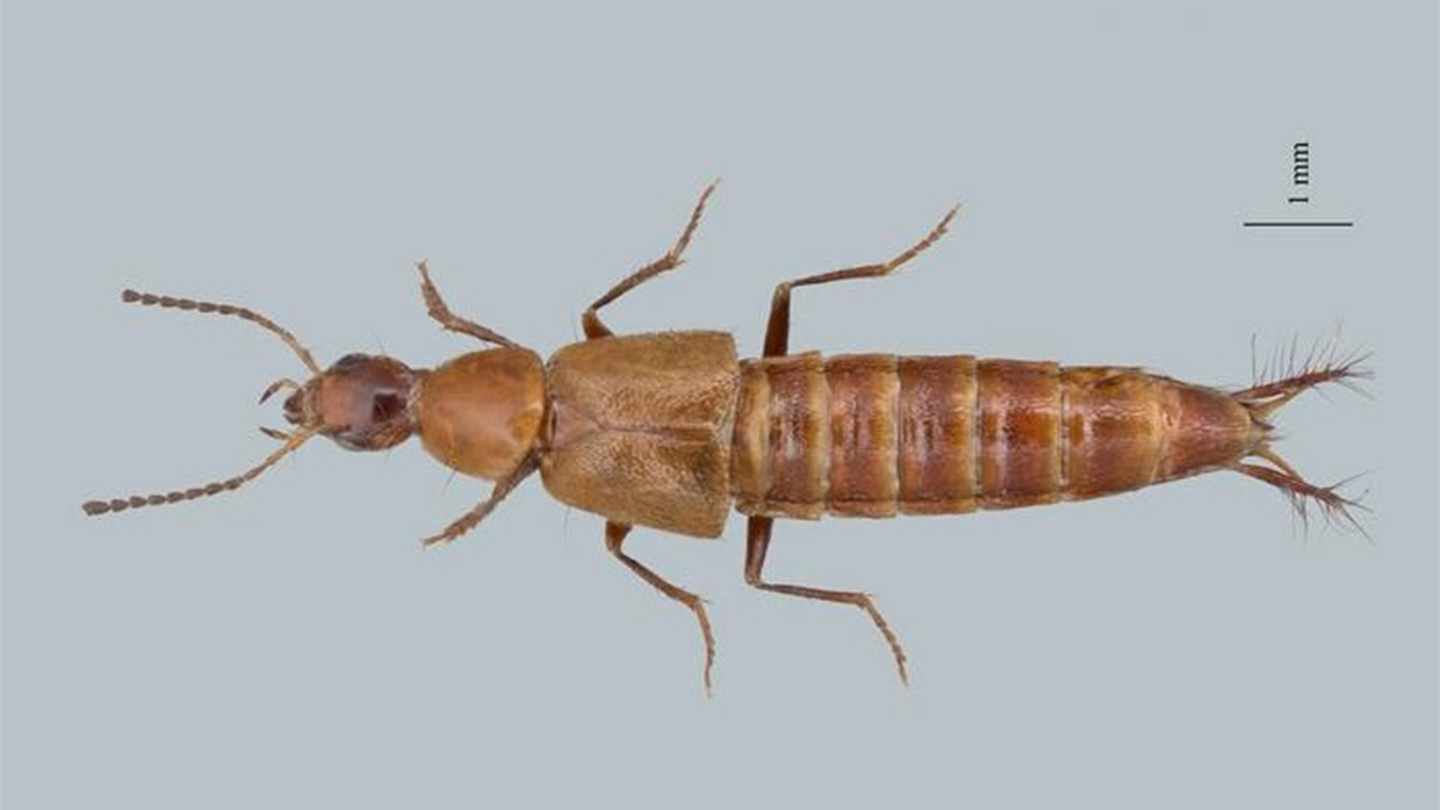These newfound beetles have male genitals shaped like a bottle opener
Loncovilius carlsbergi is found living on flowers in South America and not on the floor of a bar.

Researchers in Denmark have discovered six new species of beetle, including one with some eye-opening genitalia. Loncovilius carlsbergi has a penis shaped like a bottle opener. The top looks like the protruding longer part of a bottle opener that latches onto the bottle cap, and the bottom resembles the pincer that holds the bottle in place. The specimen is described in a study published October 28 in the Zoological Journal of the Linnean Society.
[Related: Acrobatic beetle bots could inspire the latest ‘leap’ in agriculture.]
While the team from the Natural History Museum of Denmark still not sure why Loncovilius carlsbergi evolved this uniquely shaped penis, studying them can reveal the role that the genitals play in the bugs’ daily lives.
“Genitalia are the organs in insects that evolve to be different in every species. As such, they are often the best way to identify a species,” study co-author and biologist Aslak Kappel Hansen said in a statement. “That’s why entomologists like us are always quick to examine insect genitalia when describing a species. The unique shape of each species’ genitals ensures that it can only reproduce with the same species.”
Aslak and his colleagues found and named six new species in the rove beetle genus Loncovilius that had been hidden within the insect collections at the museum. Loncovilius carlsbergi was named for the Carlsberg Foundation, which has funded research at the museum for years. Carlsberg is a popular 176-year-old Danish beer company.
Loncovilius beetles are only found in Chile and Argentina and entomologists don’t know too much about them. They are less than an inch long and all of their legs have sticky bristles on them, while other predatory rove beetles only have sticky front legs.
Where Loncovilius beetles live make them special among this family of beetles. Most predatory rove beetles live on the ground, among dead leaves, fungi, and bark. Loncovilius beetles live on flowers. The authors believe that their sticky legs helped them adapt the ability to climb flowers and vegetation.
“We suspect that they play an important role in the ecosystem. So, it’s worrying that nearly nothing is known about this type of beetles, especially when they’re so easy to spot–and some of them are even quite beautiful,” study co-author and systematic entomologist Josh Jenkins Shaw said in a statement. “Unfortunately, we can easily lose species like these before they’re ever discovered.”
The forces of climate change, pollution, and habitat loss is exacerbating the Earth’s biodiversity crisis. These combined forces have threatened over one million plant and animal species with extinction, a rate of loss that is 1,000 times greater than previously expected. The team believes that this crisis will likely affect these newly discovered beetles as well.
[Related: A pocketful of bacteria helps these beetles through their most dramatic life changes.]
“Loncovilius populations are likely to change in coming decades. Our simulations demonstrate that at least three of the Loncovilius species are at risk because the rapidly changing climate strongly alters more than half of their habitat area by 2060,” study co-author and PhD student José L. Reyes-Hernández said in a statement. “It is important to stress that many more species will be affected by this change, but we don’t know how because only for four species we had enough data for our analysis.”
The planet’s species are also going extinct faster than scientists can fully name and describe them. Some estimates place the number of species lost from the Earth every day at upwards of 150. According to Jenkins Shaw, as many as 85 percent of all species on the planet are still not formally named or described.
“A taxonomic name is important because nature conservation relies on knowledge about species in particular areas. Without such a description, species are often left out of conservation efforts,” said Jenkins Shaw.
The authors hope that Loncovilius carlsbergi’s attention-grabbing genitals could spark broader interest in insects. They are also working on producing an actual bottle opener shaped like this beetle’s penis into production.
“It’s important that we recognize the vast wealth of yet to be researched species around us before it’s too late. We would like for people around the world to talk about the crisis facing our planet’s species. A move towards serious learning and awareness may be sparkled by a light chat that takes place over a beer,” said Kappel Hansen.